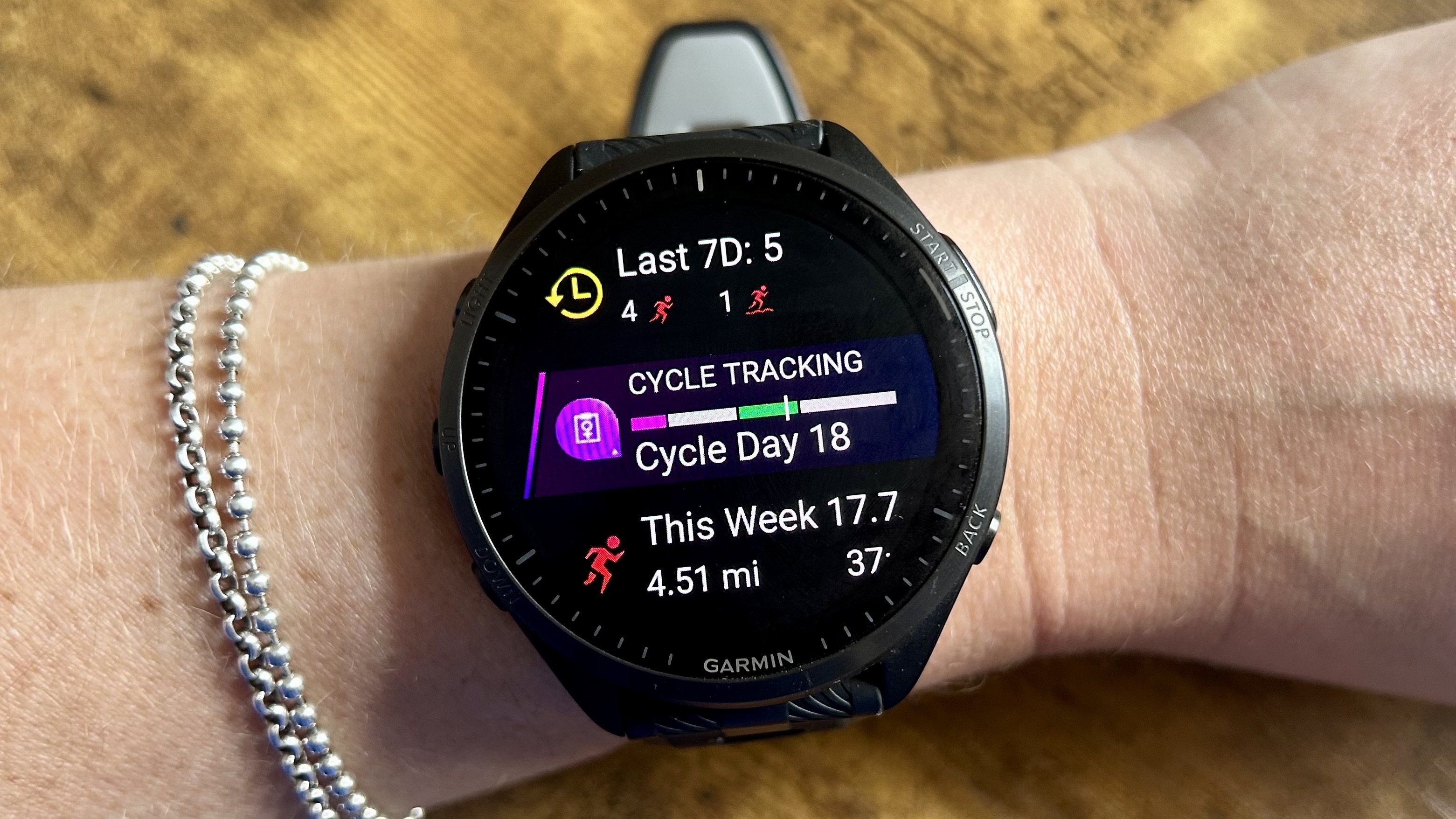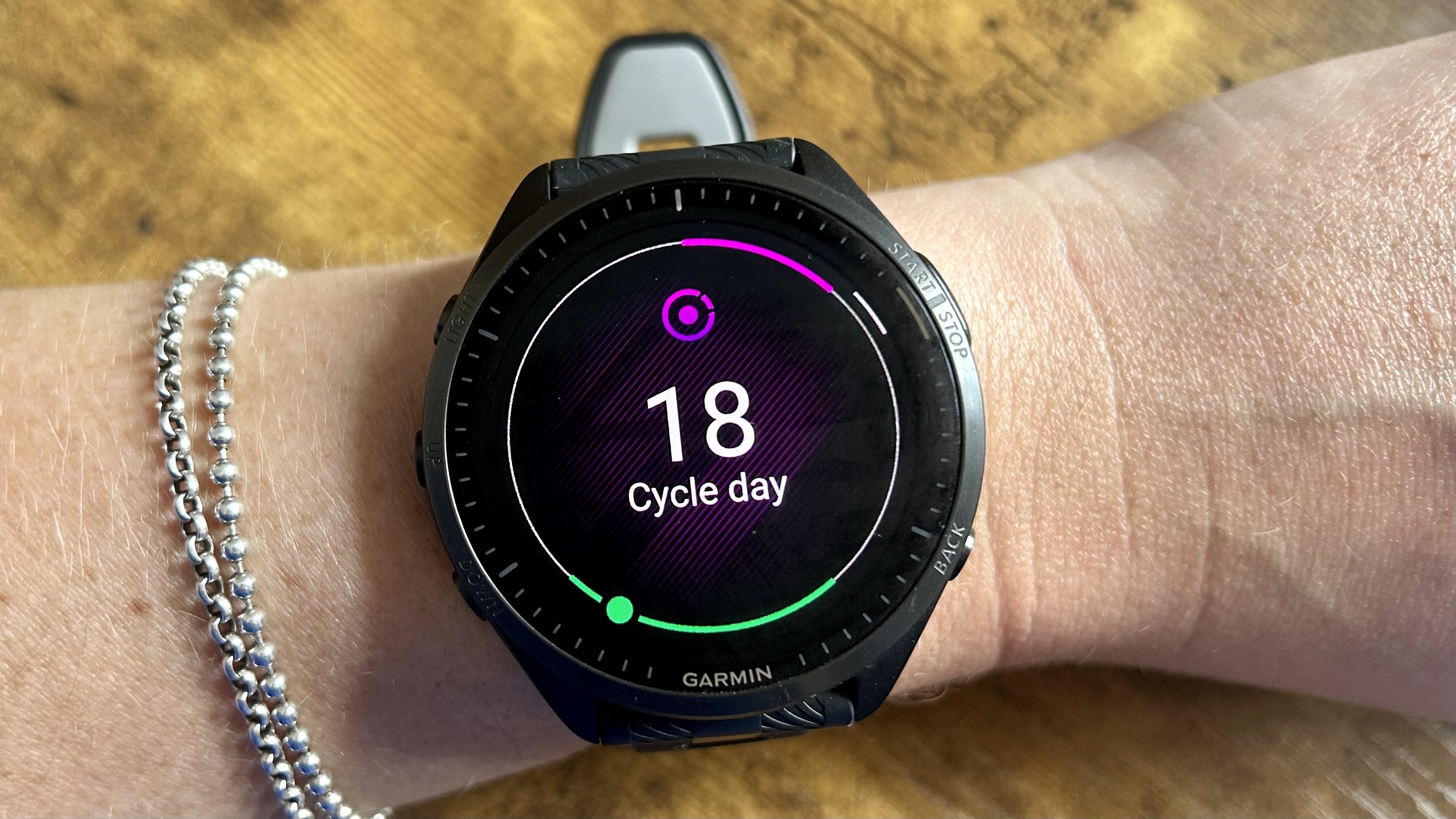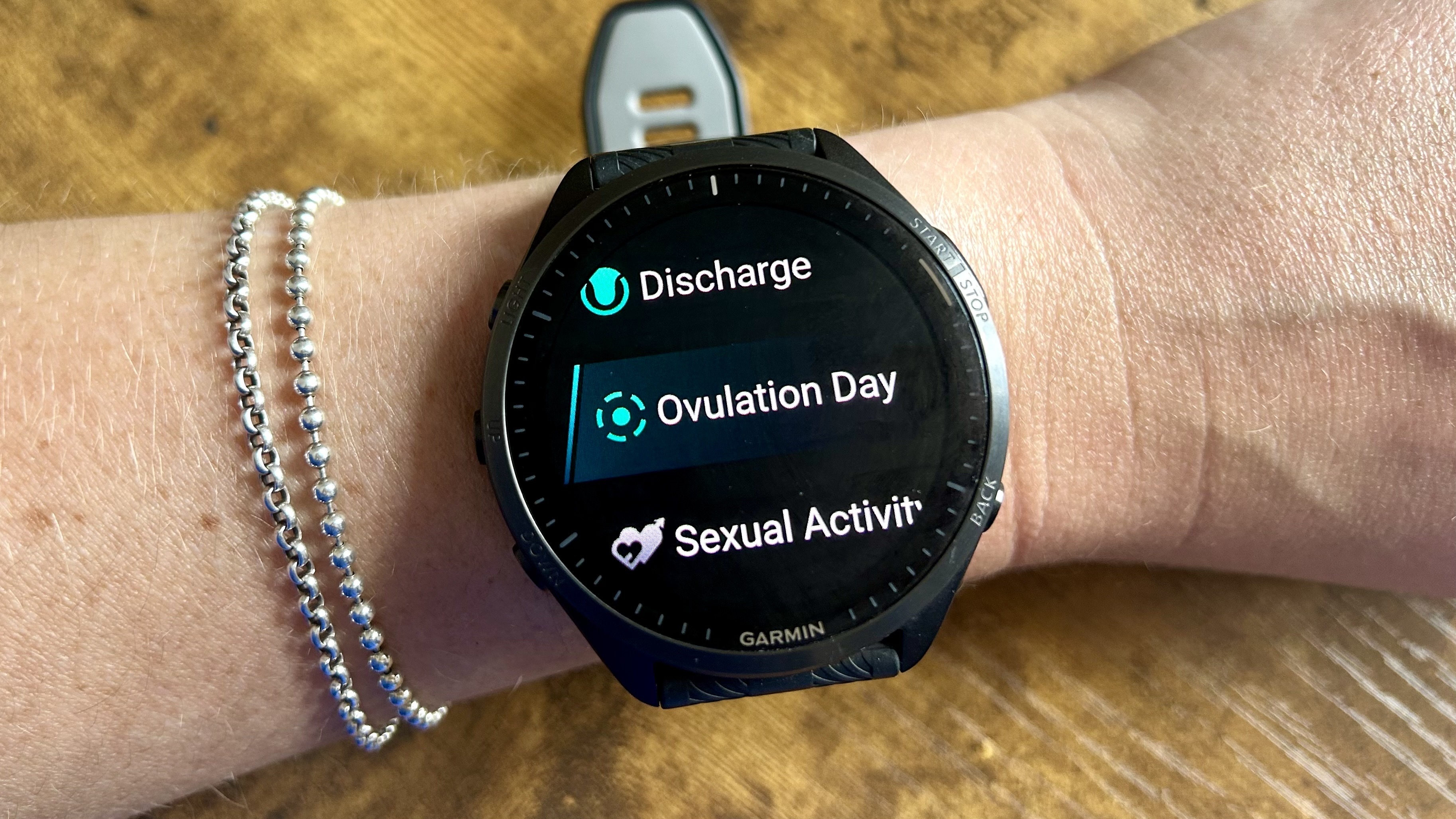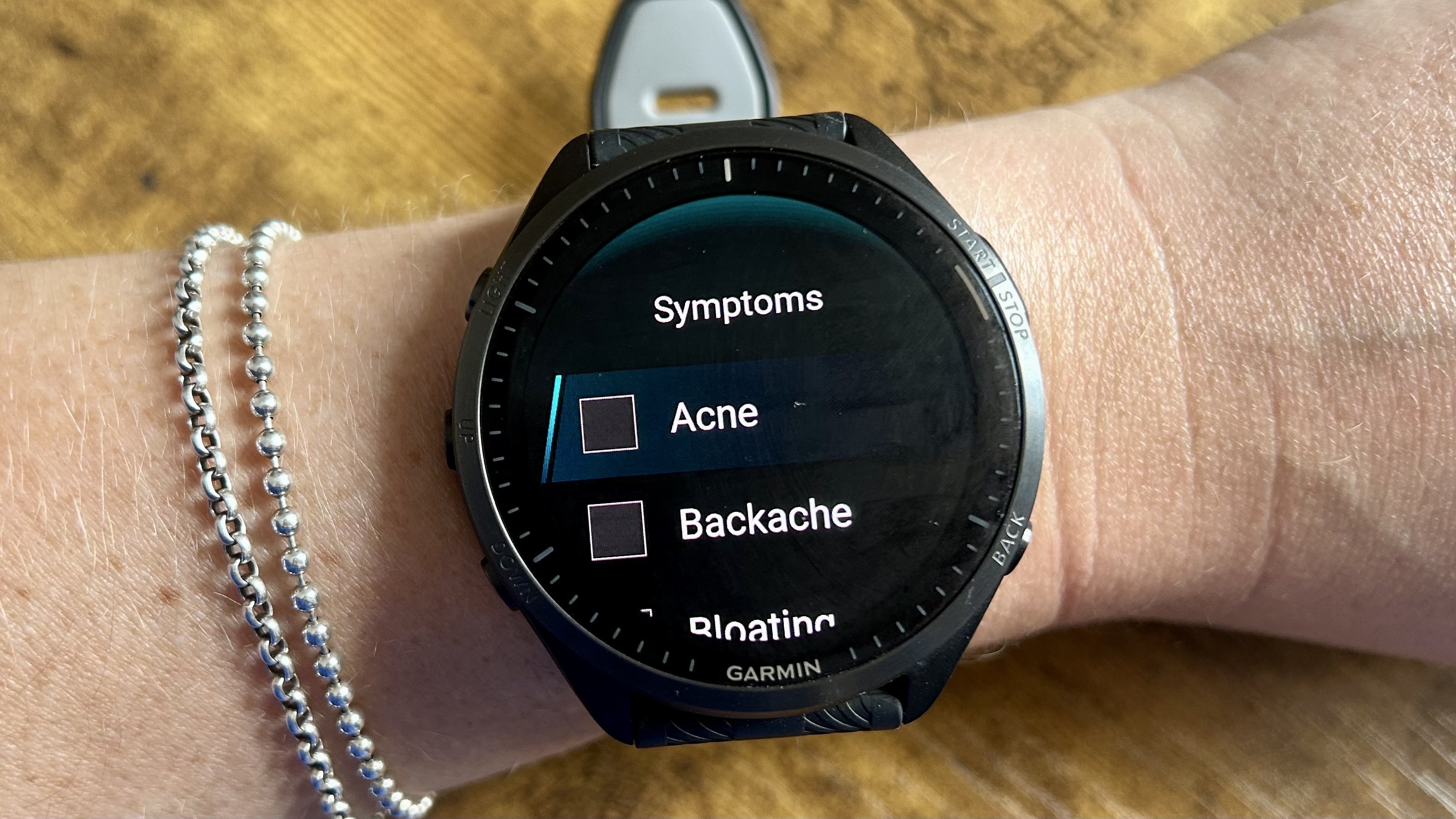
Far from just tracking your steps and workouts, these days most of the best fitness trackers on the market are jam-packed with features that help you make more informed decisions about your health from how well you slept to how stressed you might be and where you are in your menstrual cycle.
To find out more about how some of the best Garmin watches on the market track your cycle, we sat down with Jill Kaiser, senior product manager at Garmin, who led the development of menstrual cycle and pregnancy tracking.
“Every person who menstruates is different,” Kaiser explained. “We want them to be able to understand and see their trends, just like you would see within your Body Battery features, within your sleep, within your performance. How your body is changing throughout your cycle is very important, so we're giving that power to the user.”
As well as showing you where you are in your cycle, Garmin’s Menstrual Tracking feature will give you hints and tips into how you should be training, dependent on your cycle. There are four main stages of the menstrual cycle — menstruation, the follicular phase, ovulation, and the luteal phase. Your hormones will vary in each phase of your cycle, and as exercise impacts your hormone balance, some women find it can be helpful to adapt their exercise routine to their cycle.
For example, progesterone and estrogen are at their lowest level during menstruation. You might feel less energy and motivation, and find it more challenging to do fast-paced cardio that involves stamina and endurance.
During the follicular phase, your estrogen levels rise, giving you more energy, making it the best time to do high-intensity exercise.
Your energy levels are also likely to remain high during ovulation, however, you might experience some bloating.
During the luteal phase, your body releases progesterone, to maintain the thickened lining of the uterus. The increase in progesterone may increase feelings of fatigue. Your body temperature also rises in the luteal phase, which can impact exercise — one study found that increased body temperature can impact your running performance, for example. Of course, this doesn’t mean you should avoid running, it just might be more challenging to hit fast paces in sessions.
Read on to find out more about how the menstrual tracking feature works on Garmin Connect, and how to add it to your watch.

How does Garmin’s menstrual tracking feature work
Unlike other trackers that look at skin temperature readings, Garmin’s menstrual tracking feature is based on user information. “A user goes in and sets up their cycle information — that's the start day of their last period and the typical length of their cycle," Kaiser said. "Then we have all of these logging features, which include physical symptoms, mood, and discharge. We also look at average cycles over time in the report view, which shows you one cycle, six cycles, and a 12-cycle view. We take the six cycles and average them together to give our predictions.”
At the moment, while many Garmin watches have an internal temperature sensor, it’s not used to measure skin temperature. Although it can be influenced by the environment, skin temperature can be an indicator of core body temperature — an increase in body temperature indicates ovulation. This might be something we see in future watches and is how devices like the Oura ring and Apple Watch Series 8 predict ovulation.

How to add Cycle Tracking to your Garmin Watch
Ready to get started? Here’s how to set up cycle tracking in Garmin Connect, and how to add the Women’s Health widget to your compatible Garmin watch.
- To set up menstrual tracking, sign in to Garmin Connect on your phone, or computer
- Open the main menu, and select Health stats
- Select Menstrual Cycle from the drop-down
- Your watch will then ask you for some details to complete the setup, such as the first day of your last period
- From here, you can start tracking, adding extra data in the ‘Add Symptoms’, and ‘Add Notes’ sections on your Garmin Connect app.

If you’d rather not have to reach for your phone each time you want to check where you are in your cycle, you can add Cycle Tracking to your watch, but it’s a little fiddly. To do this, you’ll need to download the Women’s Health app. Here’s how:
- Click into your Garmin Watch settings from the Garmin Connect app
- Select the Activities and Apps option
- Click Open Connect IQ Store, and then select Women’s Health Tracking
- Once downloaded, you will see Women’s Health included in the list of your watch’s apps, and be able to see your cycle information included in the menu from your wrist.
Following the Supreme Court’s decision to overturn Roe vs Wade, women in the US have been worried about the safety of their period-tracking apps. You can read more about Garmin’s privacy policy here, as well as the advice from a cyber-security expert on keeping your personal data safe.
If you choose not to track from your phone, here’s how to track your periods without using an app.







